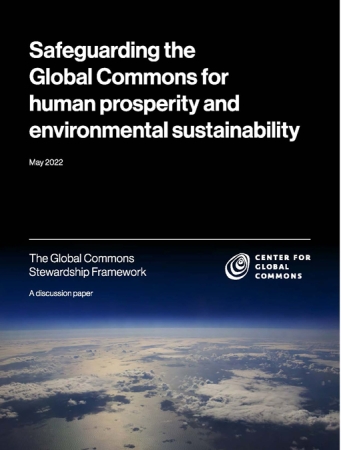Charting the path to net zero Reflections from COP27 and beyond
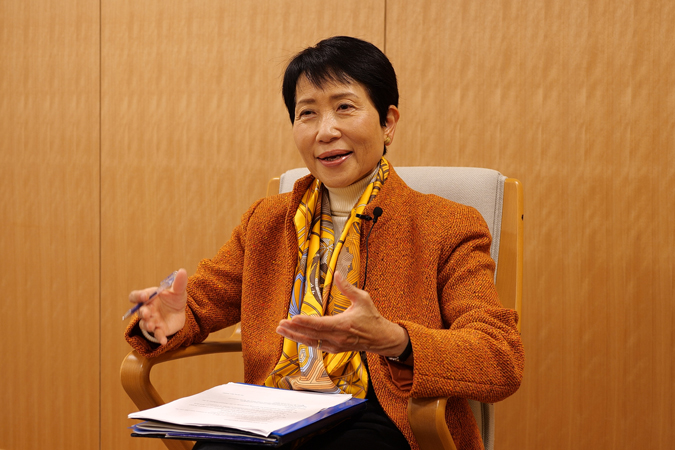
The 27th session of the Conference of the Parties to the United Nations Framework Convention on Climate Change (COP27) was held in Sharm el-Sheikh, Egypt in November of 2022. Professor Naoko Ishii, Director of the Center for Global Commons, reflects on her time at the event, the role of universities and other non-state actors in these global discussions, and the urgency of immediate action.
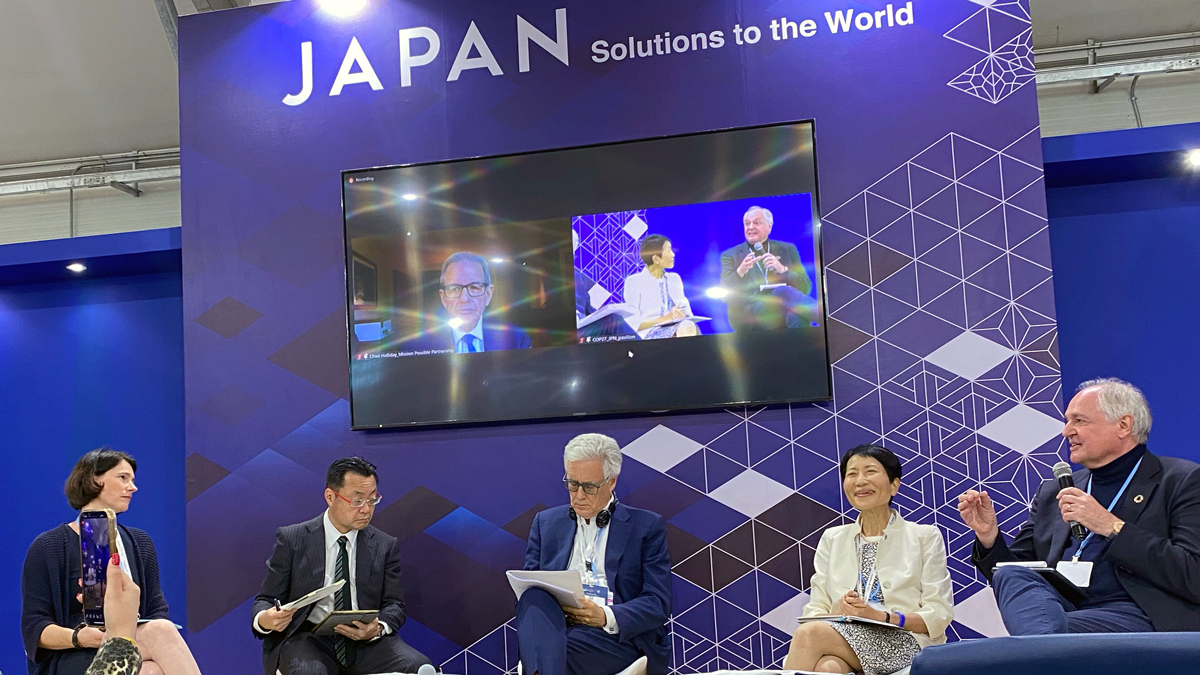
Discussion organized by the Center for Global Commons with experts of the Planet Positive Chemicals report at the Japan Pavilion in COP27.
── What was the mood going into COP27 this year? Did the event meet expectations?
At COP26 in Glasgow in 2021, there was a sense that we could aim higher, which resulted in various commitments being made. However, the expectations for COP27 were low before we even arrived in Sharm el-Sheikh, and the outcomes were even lower. It was not unexpected, but it is a huge problem that COP could not deliver what we needed to see this year.
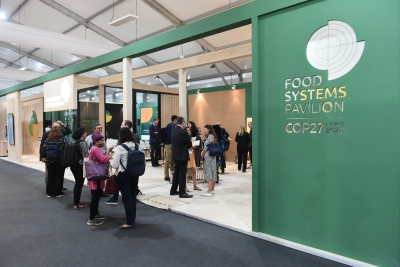
One good thing that came out of COP27, though, is the fact that for the first time in the event’s twenty-seven years, they had pavilions dedicated specifically to food systems and the ocean.The world has realized that fighting climate change goes beyond simply energy transition; we must also change our food systems and address the issues that face our oceans. COP is really a good place for tackling multiple issues at once because it has become apparent that many systems need to change on a global scale.
Also, because COP is such an international event, it has a significant influence on other events. For example, many of our discussions at the World Ocean Summit Asia-Pacific (November 29-30, Singapore) were directly related to the outcome of COP27, not to mention conversations held here at the Tokyo Forum (December 1-2). We also have the 15th UN Conference on Biodiversity (December 7-19, Montreal), also known as CBD COP15. When people hear “COP,” they often think about the climate COP, but there are actually COP for other environmental treaties, which reflects the fact that our global environment consists of many important planetwide systems beyond the climate.
The “parallel world” of non-state actors
── Who all is involved in the decision-making process at COP?
For the last decade or so, COP has consisted of two worlds: the world of the negotiators and a kind of “parallel world” of non-state actors. People have realized that it is not just a negotiators’ job, but we need businesses, we need academia, we need citizens — the entire world needs to come together to address climate change. As a result, this parallel world has become a critical part of COP. It is not enough for negotiators to simply agree on paper, as non-state actors are the ones who ultimately become agents for implementing the negotiated, systemic changes and fulfilling commitments related to sustainable development. In fact, the parallel world was one of the forces behind COP21’s success. Negotiators can feel the pressure and encouragement from non-state actors, and at COP21, this pressure manifested in the historic Paris Agreement.
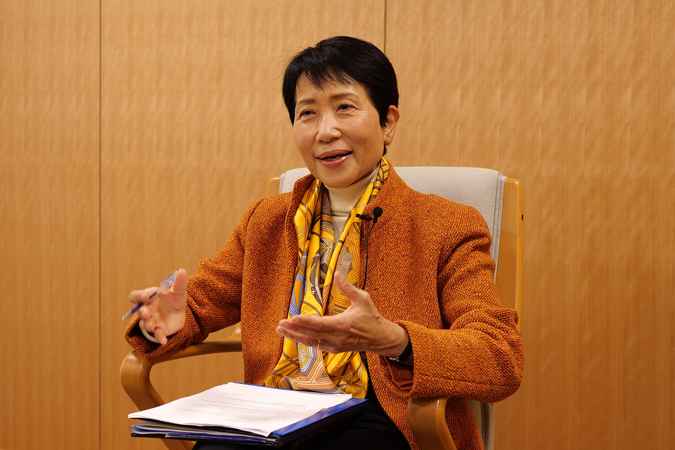
COP26 in Glasgow was a striking example of what non-state actors can accomplish. Some of the interesting things that came out of the parallel world include the launch of the Glasgow Financial Alliance for Net Zero (GFANZ), a network of financial institutions that are committed to providing resources for implementing net-zero commitments. Another is the creation of the International Sustainability Standards Board (ISSB), which consolidates sustainability-related disclosure standards in order to help businesses make decisions about what measures to take. The one that really interested me, however, is the First Movers Coalition (FMC), a global initiative that is working to decarbonize the industrial sector by creating a greener, cleaner value chain. What this means is that within this Coalition, industries looking to create greener, albeit more costly, products have a guaranteed buyer, allowing them to continue investing in and producing that product. This initiative makes an enormous difference for businesses that are looking to invest in green technology but are unsure which to invest in or whether they will find buyers for a more expensive product.
── How do you envision the role of universities in these global conversations?
When I joined the University of Tokyo two years ago, my goal was to ensure that the academic world in Japan be able to wield its potential as an influential non-state actor more effectively. I was the CEO of Global Environment Facility (GEF) for eight years, and I have seen with my own eyes the power of non-state multistakeholder coalitions(*) and the role that research institutes and academia can play in these groups. I have not yet encountered many multistakeholder coalitions in Japan, so it is my hope that universities like UTokyo work to create such coalitions so that we can bring our expertise and resources to the global community and vice versa.
You can see some of this potential in the Planet Positive Chemicals report that the Center for Global Commons presented at COP27’s Japan Pavilion. The report was sponsored by Mitsubishi Chemical, which has been a partner of the Center for Global Commons since its inception. Over the course of two years of working with them and our external partner SYSTEMIQ, we created a roadmap for the chemical industry to reach not only carbon neutrality, but to become “climate positive.” The chemical industry is one of the hardest sectors to decarbonize, and as a result, it has been an obstacle to net zero for numerous other sectors because of its ubiquity in every part of our economic and social life. Addressing difficult, fundamental challenges like this is, in my view, a key role for universities.
Japan in 2050
── What does the journey to net zero look like for Japan?
Former Prime Minister Suga announced in 2020 that Japan would also aim to achieve net zero by 2050, putting us in line with our global partners. There is an expectation that the scientific community chart the way forward, so we created this Energy Transition Initiative - Center for Global Commons (ETI-CGC) platform, a coalition between the University and business leaders that are interested in figuring out how to achieve net zero. In the past, many have said that Japan is unable to achieve net zero due to its so-called “unique” circumstances. The platform, however, utilizes globally recognized models while also keeping in mind Japan’s specific situation, serving as a science-based, collaborative discussion space.
We announced this platform at COP26 in Glasgow, and presented our 1-year interim report at COP27 to receive feedback from an international audience. One notable contribution involved critically reexamining Japan’s circumstances that are perceived as “unique,” namely, whether this “uniqueness” is just a misconception based on stereotypes or if there is actually some scientific basis to the idea. If the latter, how do we address and overcome those circumstances? These are questions that we need to dig into much, much more, to sort out what kind of solutions are best for Japan.
Our current scenarios present a much larger role for renewable energy sources compared to the government-designed pathway. The discussion process is important, though, because we need to be able to address this issue together. Working together with committed business leaders in this manner creates a shared understanding of what kind of policy package and investment is necessary to accomplish our goal.
Actualizing a more sustainable future
── What does the future look like moving forward?
My goal is to safeguard the global commons. As an economist, the fundamental reason that they are threatened is the fact that the current economic system does not value the externalities coming from natural capital. When the global commons are not recognized under the current economic model, they are vulnerable to exploitation due to the assumption that they are “free” goods. Those who value the natural environment are often highly resistant to the idea of monetizing natural capital because nature is seen as too sacred to ascribe a monetary value, but unless we find a way to put a price on natural capital and have economic decision-making depend on that price, nature will continue to be exploited. That is why we are facing these challenges involving the climate, the oceans, biodiversity, and pollution. How can we change the entire economic system such that it takes into account the value of natural capital as part of decision-making?
There is still quite a long way to go, but the problem is, we do not have the time. We cannot wait another ten years to act. We already spent twenty-five years or so coming up with a disclosure agreement for just carbon. Certainly, it is no easy task for the entire world to overcome political hurdles and allegiances and decide together how to appraise natural capital, but as it is, to borrow the words of UN Secretary-General Antonio Guterres, we are “on the highway to climate hell with our foot still on the accelerator.” We know the science; we know we need to transform the economic system, and yet, we have not been able to change the course of climate change. And all the while, it becomes ever more apparent that the burden of our inaction is borne disproportionately by the poorest and the most vulnerable countries and citizens.
Since COP21 in Paris, the science has become incredibly clear: a goal of two degrees is not sufficient. We need to achieve 1.5, and in order to do so, we must transform our economic system. At the Tokyo Forum two years ago, we made a clear statement that we only have ten years left to change course, to achieve carbon neutrality by 2050 and to achieve sustainable development within planetary boundaries, but we are running out of time. That’s what we are trying to address at the Center for Global Commons, and it is not simply an academic exercise. We need a coalition of businesses, policy makers, and academics working on this together. We need to deliver, the sooner the better.
*Note: Multistakeholder coalition: A network of multiple actors engaging in dialogue, decision making, and implementation of responsive activities to solve common problems.
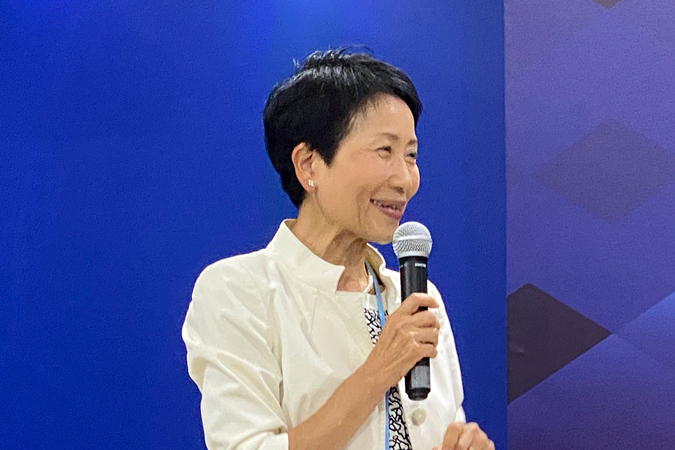
Naoko Ishii
Director, Center for Global Commons
Professor, Institute for Future Initiatives
Executive Vice President
Ph.D. in International Studies from the Graduate School of Frontier Sciences at the University of Tokyo. Before assuming current position in August 2020, she served as CEO of Global Environment Facility beginning in 2012. She has also previously worked for Japan’s Ministry of Finance, the International Monetary Fund, Harvard Institute for International Development, and the World Bank. Co-supervised the Japanese translation of Johan Rockström and Mattias Klum’s Big World Small Planet: Abundance within Planetary Boundaries (Yale University Press, 2015) (JP: Chīsana chikyū no ōkina sekai, Maruzen Publishing, 2018).
Interview: December 2nd, 2022.
Interview: Hannah Dahlberg-Dodd, Yuki Terada
Related links
- [Event] COP 27 Japan Pavilion Seminars (Center for Global Commons – The University of Tokyo)

- [NEWS] New Global Commons Stewardship Framework charts path toward a prosperous future that promotes peace and prosperity. May 19th, 2022 (Center for Global Commons – The University of Tokyo)

- [YouTube] SPRING GX Prof. Naoko Ishii “Global Commons Stewardship Enacting Systemic Transformations”



